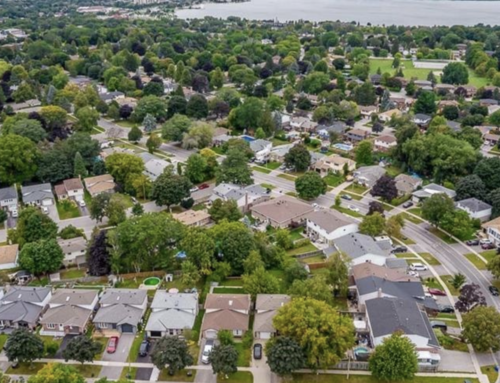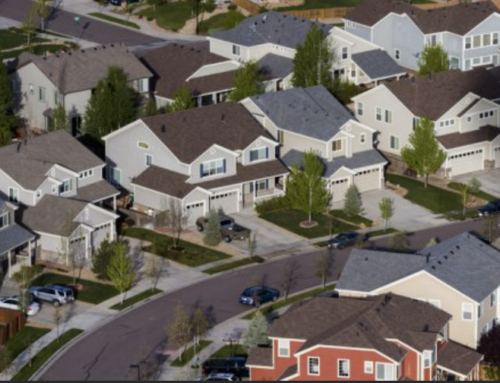After plummeting more than 40% since February, home sales are showing signs they may be reaching a bottom. Keep in mind this is NOT prices BUT sales. This is key as there are many factors to cause this – low supply of houses and of course the increasing interest rates are keeping buyers on the sideline waiting to see what happens with the rates before they enter into the buyers pool again. We could very well see this trend stopping in the spring as the market and rates should stabilize which will bring more buyers back to the table.
In October, home sales rose for the first time since before the interest rate hikes began, rising 1.3% from September. They remain down 36% compared to last October, according to the Canadian Real Estate Association (CREA). It would be very hard for sales to remain like last year when interest rates were below 3% so this is not a surprise.
“October provided another month’s worth of data suggesting the slow down in Canadian housing markets is winding up,” said Shaun Cathcart, CREA’s senior economist. “Sales actually popped up from September to October, and the decline in prices on a month-to-month basis got smaller for the fourth month in a row.”
In seasonally adjusted terms, home prices were down 1.2% from September, marking the smallest decline since June, CREA said.
The actual (not seasonally adjusted) price stood at $644,643 in September. That’s up 0.7% from September, but down 9.9% from a year ago.
New listings were up 2.2% month-over-month, CREA noted, “with gains in the Greater Toronto Area (GTA) and the B.C. Lower Mainland offsetting declines in Montreal and Halifax-Dartmouth.”
Months of inventory continued to improve slightly, rising to 3.8 months. That’s up from 3.7 in August and a record low of 1.6 earlier this year.
Removing the high-priced markets of the Greater Toronto and Vancouver areas, the average price stands at $519,643.
This isn’t the bad news that buyers think it is. When the market is where it is now, low supply, low demand and higher interest rates – it creates an OPPORTUNITY for buyers because they don’t have to deal with the same pressures they had during COVID with multiple offers and crazy high prices – there is definitely room to negotiate with sellers now and to ensure an inspection is done – much more balanced than prior to the interest rate hikes. This also works REALLY well in a rent to own as we have more flexibility with buying properties. There is always a silver-lining – when rates were low, it was really HARD to get an accepted offer – higher rates (which will likely be short term) have created a market where more people can enter without fear of competition.
Cross-country roundup of home prices
Here’s a look at select provincial and municipal average house prices as of October, with their annual and monthly changes.
| Location | Average Price | Annual price change | Month-over-month change |
| Quebec | $475,577 | +1.2% | -0.9% |
| B.C. | $927,205 | -3.7% | +0.6% |
| Ontario | $835,090 | -8.5% | -0.1% |
| Alberta | $430,964 | +1.9% | -0.2% |
| Halifax-Dartmouth | $484,800 | +9.5% | -3% |
| Barrie & District | $794,800 | -4.8% | -0.8% |
| Greater Toronto | $1,098,200 | -1.3% | +3% |
| Victoria | $915,300 | +11.5% | -2% |
| Greater Vancouver | $1,148,900 | +2.1% | +3.3% |
| Greater Montreal | $504,800 | +2.8% | -3.6% |
| Calgary | $513,00 | +10.3% | -0.7% |
| Ottawa | $630,800 | +0.8% | -2% |
| Winnipeg | $337,400 | +1.6% | -0.7% |
| St. John’s | $318,200 | +5.5% | +1.9% |
| Edmonton | $372,400 | -0.6% | -2.6% |
.
Housing downturn: the beginning of the end?
The data suggests this current downturn may be entering the “latter stages of its cyclical downturn,” according to Robert Hogue at RBC Economics.
“The pace of decline is now slowing—there was even a tiny monthly increase in home resales nationwide in October—marking a notable shift from the deep fall in activity that took place over the spring and summer,” he wrote. “While we continue to think an inflection point is some ways off, it does suggest most of the price correction is likely behind us—at least for Canada as a whole.”
TD economist Rishi Sondhi agreed, writing, “Absent further rate hikes, one could make the case that Canadian housing demand is approaching a bottom.”
But with further Bank of Canada rate hikes expected, Sondhi says that will weigh on demand and prices. “In fact, they should continue dropping through the early part of next year,” he said.
And while Hogue sees the worst of the price decreases already behind us, he adds that rising interest rates and further deteriorating affordability will keep market activity “quiet” until early 2023, with prices bottoming sometime in the spring.
“The market downturn may be in a late stage but it doesn’t mean things are about to heat up again,” he noted. “We expect high— and still-rising—interest rates will continue to challenge buyers for some time. This will keep activity quiet for a while longer even if it stabilizes near current levels.”








Leave A Comment